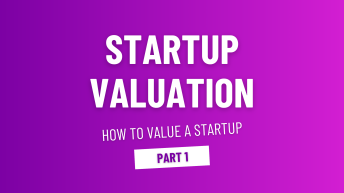When you’re raising funding from venture capitalists (VCs), one of the key documents that will shape the future of your company is the Term Sheet. It’s essentially the framework that outlines the deal between you and your investors, and understanding it thoroughly can make or break your journey.
But let’s skip the formalities and dive right into what really matters when it comes to a term sheet. These are the core elements you need to pay close attention to:
1. Board Rights: Who Sits at Your Table?
One of the first things investors may request is a seat on your board of directors. It’s becoming more common for VCs to ask for this. In the early rounds, it’s typical to have a board made up of three seats: two for the founders and one for the investor.
As your company grows and reaches the next round of funding, this usually expands to five seats: two for the founders, two for the investors, and one for an independent expert from your industry. This setup ensures there’s a balance between control and expertise.
However, as your board grows, so do the complications. Decision-making can become slower, and disagreements more frequent. That’s why it’s often recommended to cap the board at seven seats. In the early stages, it’s best to stick with just three and only increase to five when you’re in the growth phase.
But what if you already have a five-seat board when you’re preparing for a Series A round? In that case, you’ll likely need to negotiate with one of your seed investors to step down and make room for the new investor. It’s not just about keeping everyone happy; it’s about doing what’s best for the company’s future.
Remember, who sits on your board is a crucial decision that can either help or hinder your company’s success. Sometimes, investors might ask to attend meetings as observers (without voting rights). This can be a less invasive way for them to stay involved, but you should still be cautious about who you allow into the room.
Also, instead of increasing the number of board seats, consider creating an advisory board. Advisors can add a lot of value without the complexity of board governance. Typically, they’re compensated with 0.5% to 2% equity.
2. Voting Rights: Who Calls the Shots?
Voting rights can get tricky. You need to understand how much power the preferred stockholders (i.e., your investors) have, especially when it comes to making key decisions. Sometimes, certain actions require special approval, giving investors the power to veto moves like issuing new shares that could dilute their control.
These provisions are sometimes called protective provisions, and while they’re common, they need to be handled carefully. In some cases, it makes sense to give investors veto power—like if you’re issuing new equity with more favorable terms than the shares they already own. But this varies from company to company, and there’s no one-size-fits-all answer.
You’ll usually see voting rights described in the term sheet as something like this:
“The Preferred Shareholders and holders of ordinary shares will vote together, and not as separate classes, on an as-converted basis. Each preferred share and ordinary share shall have one vote.”
Before you enter any investment round, it’s crucial to seek advice on the voting structure and understand all your options. And remember, don’t sign anything without reviewing it with someone experienced in these types of agreements.
3. Liquidation Preferences: Who Gets Paid First?
One of the most important clauses in any term sheet is liquidation preferences. This dictates who gets paid first if the company is sold or liquidated. Misunderstanding this can leave you empty-handed if the company sells for a lower amount.
The key takeaway: anything above a 1x liquidation preference is not in your favor. You should also avoid participating preferred shares, which allow investors to “double dip” by getting their money back before anyone else and then still sharing in the remaining profits.
4. Pro-Rata: Keeping Their Slice of the Pie
Pro-rata rights allow investors to participate in future funding rounds to maintain their ownership percentage. It’s a common clause, and while it’s not always a bad thing, it’s something you need to consider carefully. I’ve written a post about this as well, which I’ll include in the comments for further reading.
5. Right of First Refusal (ROFR): Blocking Outsiders
The Right of First Refusal gives existing shareholders (like your investors) the opportunity to buy any shares you plan to sell before you can offer them to an outside buyer. While this clause can seem reasonable, it’s another way for investors to maintain control, so make sure you’re comfortable with it before agreeing.
6. No-Shop Clause: Locking In Your Deal
Once you’ve agreed to terms with a lead investor, they might include a no-shop clause. This means that for a certain period (usually 30 to 60 days), you’re not allowed to seek investment offers from other VCs. It’s a way to prevent you from shopping around for better deals, so it’s important to know how long this clause will bind you.
Wrapping It Up
The term sheet is your first step into a much bigger world of negotiations with investors. While it’s tempting to focus on getting the funding, you need to understand the terms behind the money. These clauses shape your company’s future, who holds power, and even how much you walk away with if things go south.
So before you sign on the dotted line, make sure you’ve reviewed everything carefully, ideally with the help of someone who’s been through this process before. The success of your company might just depend on it.
🚀 Ready to fuel your startup’s growth? Join multiples.cc today! Gain access to valuable tools, connect with investors, and get personalized support to help you succeed on your fundraising journey. Sign up now and take the next step toward securing the resources your startup needs to thrive!






Add comment